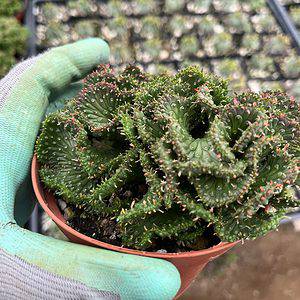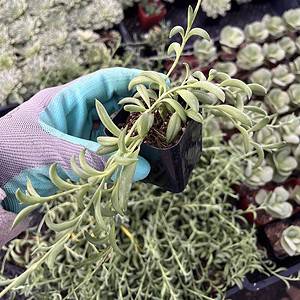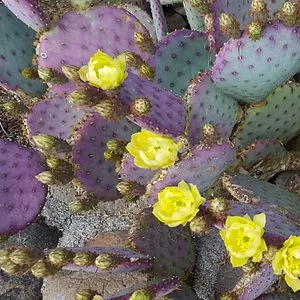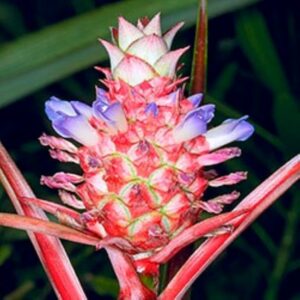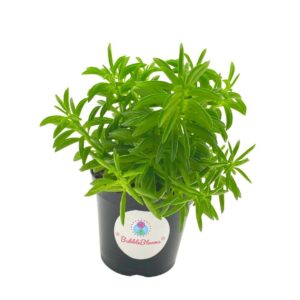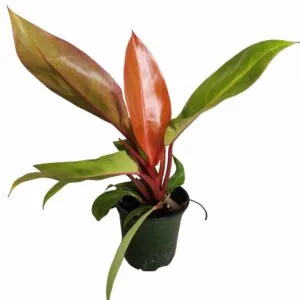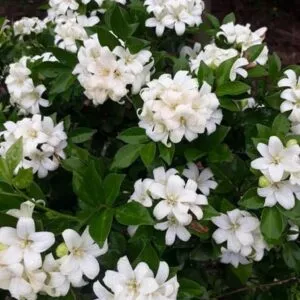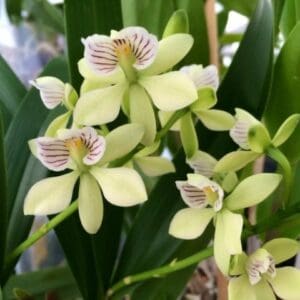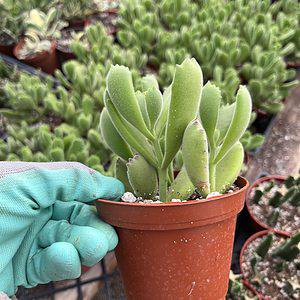No products in the cart.
Table of Contents
We all love a mug of Joe in the morning, right? Of course, as it is a popular breakfast beverage! We love to kickstart our day with coffee. Now imagine having a plant that provides you with coffee beans growing in your home.
Coffea arabica is one such plant that makes for an excellent outdoor houseplant with its dark green leaves. It develops star-shaped blooms in spring with side shoots.
The plant produces flowers that eventually turn into red berries turning black, which is the coffee ground. So, you will notice your plant will bear half-inch berries that you can eventually brew coffee with.
More About The Coffee Plant
One thing is sure with the arabica coffee plant in the home; it is a rare sight to see. Still, it also depends if you want it to bear fruit, and it helps to know how to tend to it
So, today we will help you care for your indoor plant to ensure it provides you with coffee beans. These plants naturally grow in Ethiopia, with over 60 species available.
It has a single stem, and you can cut young plants as they get older to make them bushier. Then, you can grow them in pots and carry a white-scented blossom.
You can expect the plant to bloom after four to eight years. Coffea arabica are vigorous growers; you must keep a hand on them to provide a compact growth habit.
Coffee Plants Care
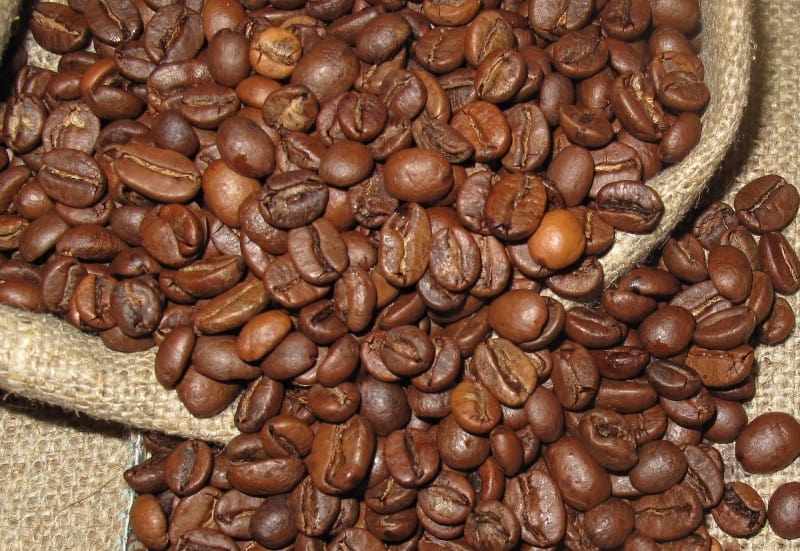
Okay, now that you are all excited to start taking care of your coffee plants, there are some things you need to know. Here is a short list of some essential things to get you started. After the care sheet, you should know how to grow coffee plants at home.
Arabica Coffee Plants Care Sheet
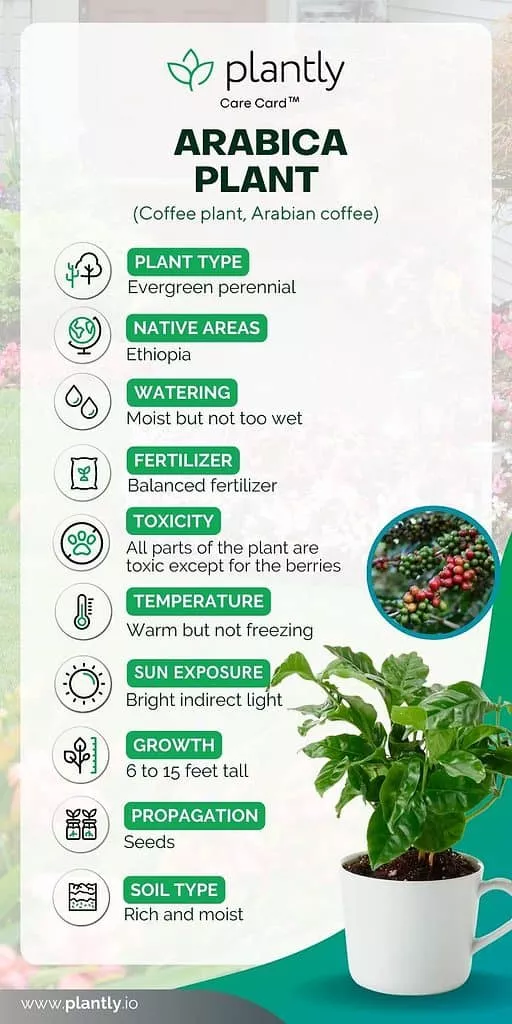
Recommended Potting Mix
A perfect soil mix for your Arabic coffee is horticultural sand with peat moss. Your coffee plant prefers acidic soil as it grows in the wild. You find this plant growing in elevated climates in its native habitat, so the ground needs to be well-drained, providing the plant naturally grows pattern.
The recommended soil pH level is between 4 and 6. So, remember to provide well-draining soil in a soilless potting mix.
Coffee Plants Grow The Best In These Lighting Conditions
You can place your coffee plant, Coffea arabica, close to a window with bright indirect light. But make sure there is no direct sunlight for most of the day. The best time for your plant to receive direct sunlight is in the morning, which might result in burned leaves. So not too much sun as the leaf edges will burn.
Watering Needs For Arabica Coffee Plants
Coffee plants grow indoors with specific water requirements. The best is to provide them with good watering and ensure that the water drains well from the drainage holes.
Growing coffee plants indoors, you can water them well in Spring and Summer. But when winter arrives, it does not need that much water. The best water is chalk-free, so allow the tap water to stand for 24 hours to remove the chlorine.
The next bit is tricky: providing your coffee plants with the proper water. If you recently received a young plant, it needs more water, and mature plants require less. Also, look at how fast the soil dries out before watering.
Keep it moist but not too dry or wet. So, please provide them with slightly damp soil for your growing plants.
In stock In stock In stock Only 2 left in stock (can be backordered)
$14.99
Sold By:
Cacti and Exotica
4″ Green Coral cactus
Rated 4.98 out of 5 based on 59 customer ratings00
Sold By:
Cacti and Exotica
$4.75
Sold By:
Cacti and Exotica
2″ String of Bananas
Only 10 available and it’s in 3 people’s basket Rated 4.98 out of 5 based on 59 customer ratings00
Sold By:
Cacti and Exotica
$14.99
Sold By:
BubbleBlooms
Philodendron Silver Sword, 4 inch pot, Philo selloum, erythrinum, hastatum Spathiphyllum
Only 98 available and it’s in 1 people’s basket Rated 4.81 out of 5 based on 279 customer ratings01
Sold By:
BubbleBlooms
Free Shipping
$16.99
Sold By:
Gar-Zen Botanical Design
Turquoise Prickly Pear Cactus Ships Free.
Rated 4.86 out of 5 based on 49 customer ratings01
Sold By:
Gar-Zen Botanical Design
Temperature & Humidity
You must provide an optimal average temperature range that is above 64 °F (18 °C). One thing coffee plants do not love is freezing temperatures. Another crucial thing for Coffea Arabica is high humidity. We recommend placing a water-filled pebble tray underneath the plant or misting it.
Fertilizing

Have you bought a coffee plant? Then do not feed your tree for the first year. The same applies when repotted. Preferably, you can provide your tree from March to September each fortnight with an organic or liquid fertilizer. Doing this prevents the soil from getting salty.
In winter, you can reduce the feeding to once a month.
Propagation of The Arabica Coffee Plant
The best propagation for the coffee plant is using seed planting, but you can also do cuttings. Yet, the only time you will be able to do seed propagation is when your tree bear half-inch berries. Then, after it carries fruit, you can harvest it in spring and leave it to ripen from a green to a red/brown-black color.
Cutting propagation is an advanced technique as the dark green leaves grow as shrubs with wooden stems.
In stock (can be backordered) In stock In stock (can be backordered)
Free Shipping
$21.99
Sold By:
Gar-Zen Botanical Design
Ananas Lucidus Fire Pineapple Rare Plant Ships Free.
Only 5 available and it’s in 2 people’s basket Rated 4.86 out of 5 based on 49 customer ratings01
Sold By:
Gar-Zen Botanical Design
$14.99
Sold By:
BubbleBlooms
Taco Plant / Peperomia axillaris / Happy Bean / Peperomia ferreyrae Yunck / philodendron selloum, horsehead philodendron, tree philodendron
Rated 4.81 out of 5 based on 279 customer ratings00
Sold By:
BubbleBlooms
$20.00
Sold By:
PotHedz Plants
Philodendron Prince of Orange
Only 2 available and it’s in 12 people’s basket Rated 4.96 out of 5 based on 106 customer ratings01
Sold By:
PotHedz Plants
Growing From Seeds
- Open the coffee cherries to remove the seed. To make it easier, you can place the fruit in water.
- Once open, you will find one or two seeds you can sow.
- Place the seed covered with about 0.8 inches of soil that is moist.
- Make sure that the ground stays evenly moist but not soggy.
- Also, provide it with an average room temperature to germinate at about 77 °F (25°C)
- Most importantly, keep the plantlets in partial shade away from direct sunlight.
- The germination can take a couple of months to be patient. You can sow the seeds in early spring or summer.
Cuttings
- The best cuttings you can use are the top shoots and done in early summer. Make sure the cuttings are 12 inches long.
- Leave the top leaves on the shoot and remove the bottom half you will place on the ground.
- Gather some moist potting soil stick the shoot into the ground and cover it.
- Also, make sure none of the leaves touch the soil.
- If you want to increase the humidity, you can use foil over the container or place a plastic bag.
- Place the cutting in a warm semi-shaded area as it can take several weeks before you notice the roots.
- Another important note is to keep the soil moist and try not to overwater your tropical plants.
USDA Growth Zone

If you own coffee plants in the USDA hardiness zones 9-11, you will have no problem growing them outside or inside the home.
Potting and Pruning
The best time to repot your coffee plant is in spring or summer. If you have a small pot when transplanting your shrub, you can go one to two sizes bigger as the roots need to grow into the container.
The ground needs to be slightly acidic with no direct sun. The Coffea Arabica is a vigorous grower and will need transplanting often. But your tree needs little pruning, and you can cut it back in spring to shape your plant.
Doing this makes the bushy growth manageable and helps to produce subsequent fruits and accelerate growth. Always remember to use a sterilized cutting tool when working with your plants.
Arabica Varieties and Similar Plants
Coffea arabica ‘Nana’
The dwarf plant grows up to 12 inches tall and is ideal for growing inside the home. It has glossy green leaves that form a bush. You get jasmine-scented flowers in spring, followed by coffee beans starting green and turning dark red.
Coffea canephora
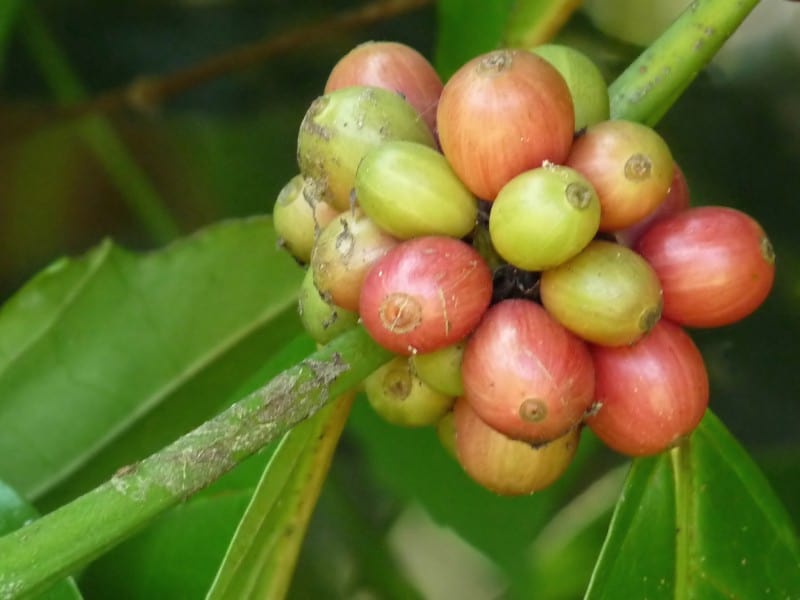
The plant produces robusta coffee and originates from Africa. But the coffee beans are strong in flavor with a harsh taste than your Arabica beans.
Coffea liberica
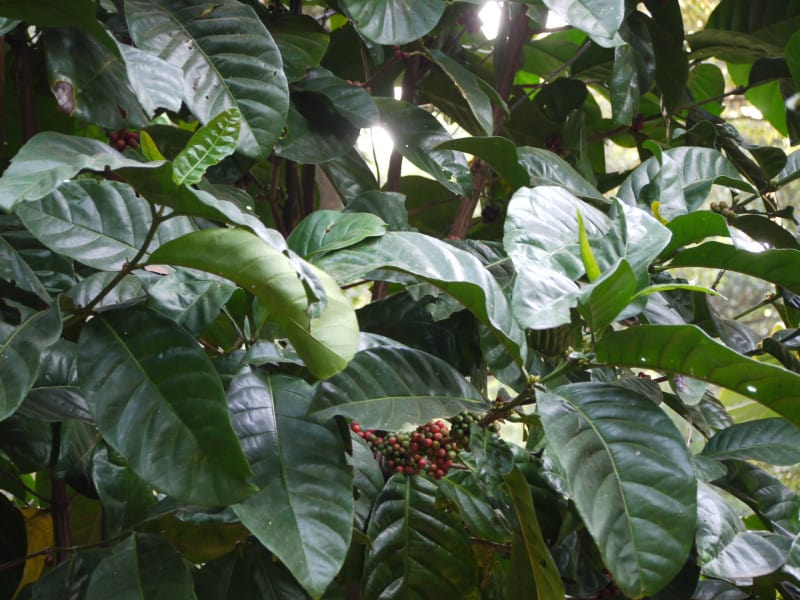
The coffee plant you find in western Africa, but botanists discovered it in Liberia first. As a result, you get large fruits with high caffeine content.
Arabica Plant Diseases & Pests
As with any plant, you have your fair share of problems, as seen here:
- Brown patches on the leaves can result from underwatering and be solved by keeping the soil moist.
- Yellow leaves are the result of overwatering, and reducing your water schedule helps.
- White insects on the underside of the leaves can result in the leaves turning yellow. These are aphids, and a cold blast of water might do the trick.
- Leaves turning red can result from mites, and plain water with dish soap helps remove these spider mites.
- Mealybugs can also become a problem with your coffee plant. Using isopropyl rubbing alcohol rubbed onto the affected leaves helps.
Frequently Asked Questions
The leading cause of browning leaves is underwatering your coffee plant. Provide it with water by keeping the soil moist.
The life cycle of your coffee plant has six different stages:
The sapling is a young coffee plant
The flowering stage before it bears fruit
The fruit forms a green cherry
As the fruit ripens, it becomes red/brow black in color
Then you can pick the berries to provide a processed bean
Lastly, it can become a roasted bean
Crispy leaves on your coffee plant can result from a couple of things. One is you might be overwatering your plant and not have good drainage. It can also mean that your plant needs a higher humidity or has been standing in harsh sunlight for too long.
Compared to other plants, these plants can thrive in tropical mountains for up to 80 years.
Regarding plant care for the Coffea arabica, it does not enjoy standing in soggy soil. When you plant coffee cherries, leave the soil to dry between watering by checking it with your finger.
These trees grow under a forest canopy and prefer shade to too much direct sunlight. They thrive in slightly acidic soil that stays evenly moist and can grow as medium-sized trees when pruned. The plant develops deep green leaves followed by flowers and cherries. The inside of the fruit bears the coffee bean that we all love to enjoy a morning cup of coffee.
Whether you want to buy, sell, or simply reach out to other plant enthusiasts, Plantly is the right place to be!
-
Free Shipping$39.99Sold By: Aloha Hawaii Orchids
$44.99In stock
Orchid Encyclia Radiata Fragrant Plant
Rated 4.65 out of 5 based on 268 customer ratings00Sold By: Aloha Hawaii Orchids -
$9.99Sold By: Cacti and Exotica
In stock
Cactiandexotica | Cotyledon tomentosa | Bear Paw
Rated 4.98 out of 5 based on 59 customer ratings01Sold By: Cacti and Exotica -
$13.99Sold By: BubbleBlooms
In stock
Variegated Hoya Kerrii Heart / Sweetheart Plant / Mothers day plant / Hoya Plant / Heart Shaped Succulent / Heart Hoya / Live Plant Rare
Rated 4.81 out of 5 based on 279 customer ratings01Sold By: BubbleBlooms -
Free Shipping$24.99Sold By: Gar-Zen Botanical Design
In stock (can be backordered)
Mexican Flame Vine Best Pollinator Ships Free.
Only 110 available and it’s in 1 people’s basketRated 4.86 out of 5 based on 49 customer ratings00Sold By: Gar-Zen Botanical Design
